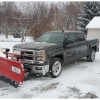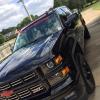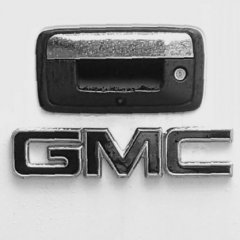Search the Community
Showing results for tags 'Auxiliary'.
-
I'm going to be mounting one of those 10.6cfm twin piston air compressors (maxi trac, morrflate, stop n go, thor) inside my cab for onboard air. My question is can I ground it to the body, should I run a bulk head and wire to the frame, or run it with the positive back to the bay and ground out on the frame there? It has a 90Amp peak draw and I'll be running 6 AWG wire, it will be fused and run through a switch box to a 200a relay. I know in the past people will ground winches to the frame or body, but with all the computer stuff going on I've got this concern on the back of my head. 2020 1500 Silverado LM2
- 7 replies
-
- Accessories
- Auxiliary
-
(and 5 more)
Tagged with:
-
Hi all, looking to get some input on auxiliary switch placement for a light bar and horn, thinking lower dash below steering wheel. I can’t make up my mind on placement and haven’t found much scouring the internet and these forums. Both switches will be placed adjacent to eachother in a dual switch housing. 2018 Silverado 1500 custom
- 2 replies
-
- switches
- Lightbar Install
-
(and 4 more)
Tagged with:
-
Hello all, I have searched for ideas on this, and only found a few people who installed "mood lighting" inside the bumper step. I'm wondering how simple or effective it would be to get some real reverse flood lights inside the bumper step? I know you could fill the whole cavity with a tractor light and it would work, but I'd like to still be able to use the step if I need it. So has anyone installed an LED flush mount or similar light that actually throws enough light behind them to use for backing up/ doing work? How does it fit inside the curved surface of the step? The reason is I want the ability to have light behind me for plowing snow. I already replaced the factory reverse and cargo bulbs with LEDs, I think they work fairly nice, but they throw really straight back like a spotlight. I'm hoping to have a little wider path lit up. I don't want to cut the bumper or have lights hanging down below the bumper, but I know those would be alternative options. I know there have been a lot of creative people adding auxiliary lights to their trucks, so I'm hoping someone can show how you were able to do this.
-
I have 2 led light bars under my rear bumper that I use to reverse at night that are currently wired to a switch in the cab. I was wondering if anyone knew of a way to have them wired into my reverse lights and also the switch so that they will come on when I put the truck in reverse but I could also control them manually.
-
I know I'm not the only guy who has gone with this setup, but I'm posting this to refresh and refine the topic. My setup is slightly modified, and I also have some questions at the end for others who already went this route as well. I deliberated on this project for quite awhile, because I've had negative experiences with electrical systems in the past. You can do everything right, and in spite of best efforts the vehicle's PCM just doesn't cooperate sometimes. I initially wanted to make this OEM true using strictly factory auxiliary battery option components. The factory option for the auxiliary battery is "TP2." I ultimately decided, though, that there was a better way to get what I wanted while still keeping it very close to factory and much more cost-effective. The only real choice that needed to be made was how I would connect the two (isolator, solenoid, direct connection, etc). I researched and went back and forth for about a year before I finally chose the marine-grade Blue Sea Systems ML-ACR. The acronym stands for Manual Lever Automatic Charging Relay. The ML-ACR is proven and very popular in the overlanding community with nothing but great reviews. It offers three settings with a magnetic lever under the hood. 1. Automatic - the batteries are isolated until the alternator provides amperage necessary to begin charging the starter battery. Once this happens, the magnetic button on the lever is activated automatically, connecting the batteries. 2. Manual Off - the batteries stay isolated from one another regardless of amperage provided to the system. This is achieved by turning the yellow lever to its off position. The batteries will never connect while on this setting. 3. Manual On - this connects the batteries even with the vehicle off. The benefit of this option is never needing jumped again. If your starter battery loses voltage required to start the vehicle, simply push the magnetic button in on the yellow lever. This connects the batteries, immediately channeling voltage (~12.5v) from the aux to the starter battery, allowing you to start the vehicle. There's also a remote switch included that can be located in the cab, but it's use is optional. The remote switch is the typical rectangular auxiliary switch that fits aftermarket panels. I did not use it, because I like keeping my cab factory clean and didn't want to cut anything inside. Tools needed: Something to cut copper cable, Any style terminal crimpers, Something to shrink heat wrap, Razor or knife to strip copper cable sheath, Socket set. Parts needed: My model came stock with the aux battery tray, so I only needed the bolt and plastic clamp to retain the battery in that tray. GM #11519527 (bolt) - $6.23 GM #14005061 (plastic retainer) - $5.49 GM #84043745 (fuse block) This is the same fuse block that clips on the top of your main battery. I wanted to have a few high-amp fuses for my winch connections, and I like that it looks factory. This is not necessary to complete the project. - $58.55 GM #84180633 (fuse block cover) This is the plastic cover that snaps onto the fuse block. - $12.76 Factory-specific battery model #48-AGM. I went with the Diamond model from Battery Source. - $179.99 Blue Sea Systems ML-ACR - $185.45 Ford OEM negative terminal clamp...I just needed something simple. - $12.75 Materials specific to wiring (all from Amazon.com): 10' combo pack of both 1/0 AWG copper red and black welding cable. This is high quality and rated for 300 amps at 25', which is much more than I need. I ended up with about 2' extra of each color when I was done. - $64.80 15-pack of 1/0 AWG marine-grade terminals. I only used six of them for this, but I needed the rest for another project, and it's cheaper to buy in bulk. - $19.61 4' red and 4' black adhesive lined marine-grade 3/4" heat shrink. I only used about 12" of red and 6" of black for this project, but again it's cheaper in bulk. - $13.00 2-pack of Fastronix 3/8" stud red terminal covers for the ML-ACR. - $7.99 20' black fire retardant 1" inside diameter split wire loom. I used this where I ran both pos and neg together across the back of the engine bay. It looks factory. I probably only used about 7' for this project. - $9.97 10' black fire retardant 5/8" inside diameter split wire loom. I used this to cover the individual strands of cable, which was only about 3' total. - $12.95 20-30 black zip-ties. I use zip-ties for everything, so they were already on hand. My total for materials came to $589.54, but I'm sure I could have cut down on the cost if I hadn't purchased so much overage for other projects. I also used the OEM fuse block and cover, which aren't necessary. Given that, this project can definitely be completed in under $500. That's about 1/3 what any dealership will quote you, assuming they're even willing to retrofit your truck with the TP2 factory option. Most are for whatever reason hesitant to take on the project. The actual job of connecting everything is pretty simple. I spent less than five hours in all, but it can be done in three hours. I spent a lot of time deciding how I wanted to route wiring and where I wanted to mount the ML-ACR. There aren't many places in the engine bay that make sense. I ended up mounting it on the fuse panel lid adjacent to the aux battery location. I used four mounting screws to do so, and I'm very happy with that location and method. The fastest process to complete the project follows. 1. Clamp the negative terminal on the stud, put the battery in the factory aux location, bolt it down loosely, and clip the optional fuse block on. 2. There's a fuse panel directly adjacent to the battery location. Remove the fuse panel lid and mount the ML-ACR in the center of the fuse panel lid with the terminals facing the body and the yellow switch facing the engine. 3. Route copper cables closely to what you intend to be their final positions. One single length of black cable should be routed from the starter battery neg terminal to the aux battery neg terminal. Two lengths of red cable will be used. One from the starter battery pos terminal to the ML-ACR, and one from the ML-ACR to the aux battery pos terminal. Mark the cables for cutting. 4. Remove the cables from the engine bay, cut, strip, and crimp the cables. 5. Reroute copper cables into their final locations. Use caution when connecting cables to avoid crossing and shorting. Tighten all connections. 6. The ML-ACR has a ground wire that must be grounded to the neg battery terminal on the aux battery. 7. Dress cables with the loom and zip-ties. 8. You can test the system with a multimeter and your dash voltmeter. - Batteries should be at ~12.5v when the vehicle is off. When isolated, each battery will likely read a slightly different voltage output. When manually connected with the yellow button in (vehicle still off), both batteries should read identical voltages. - Lock the yellow switch to isolate the batteries and start the vehicle. The voltmeter in the dash should read ~14v. The starter battery should be ~14v when tested with the multimeter. The aux battery should still read ~12.5v. - Rotate the yellow switch to its automatic position and wait. Revving to 2,500 RPM will expedite this step. It could take as long as 5 min, so be patient. Observe the magnetic push button on the yellow switch, which will automatically retract once the alternator provides necessary amperage. - Once the push button is automatically retracted, both batteries will read identical voltage at ~14v. - Shut the vehicle off and immediately move back to the engine bay to observe the push button. It will automatically pop out in approximately 30 sec.
- 8 replies
-
- tp2
- dual battery
-
(and 2 more)
Tagged with:
-
Hello, I have a 1999 Chevy Express conversion van. It has very low miles on it. It has the Winnebago conversion package from Chattanooga, TN. It was supposed to have the 34 gallon tank per the conversion documents but only has the 31 gallon tank. I would like to add a secondary tank where the spare tire is located under the body and behind the rear axle. Has anyone found a company that makes such a tank? If so, can you provide me with the link? Thanks!







